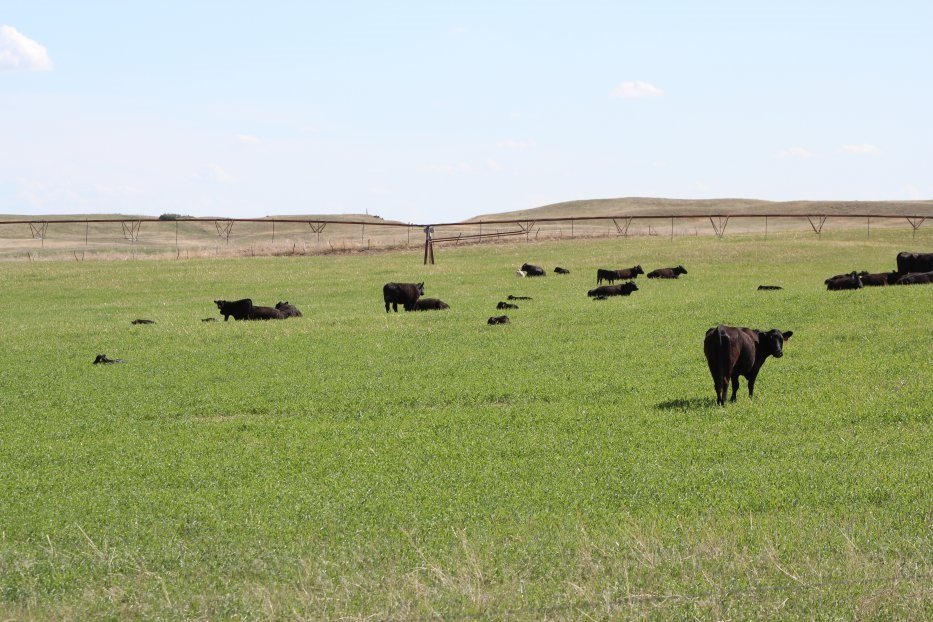
Mary Drewnoski, UNL Beef Systems Specialist and Jay Parsons, UNL Biosystems Economist
With the current cattle, corn, and pasture prices many producers have been asking “should I convert some of my irrigated crop acres to grass?” In the last two years corn prices have decreased 47% (Table 1 http://go.unl.edu/j7zn) while calf prices have increased 51% (Table 2 http://go.unl.edu/9gkd). At the same time in Nebraska, pasture rental rates per acre have increased 36% (Figure 1 http://go.unl.edu/ktmp) whereas irrigated crop land rental rates have decreased by 12%. Cash rent rates in central Nebraska average $246/ac and ranges from $190 to $330/ac for irrigated crop land (Figure 2 http://go.unl.edu/hm68). In central Nebraska, around 0.8 to 1 ac per pair of irrigated cool season grass on marginal (~150 bu/ac corn yield) crop land would be needed to allow grazing from May through October. A simple budget analysis which includes establishment costs amortized over 10 years, fertilizer (150 lbs N/ac), irrigation (16 ac/inches/year) and cash rent for marginal land at $220 (Table 3 http://go.unl.edu/rxvg), suggests that under current market conditions converting marginal irrigated acres to forage production may be viable as this would result in a forage cost of $63 to $79/pair/month. This price of forage is competitive with current pasture rental prices in the center part of Nebraska which averages $62/pair/month and ranges from $48 to $83/pair/month (Figure 3 http://go.unl.edu/fd7p). Assuming that hay ($90/ton) would be fed for 1 month in the irrigated pasture system and dry cows would graze corn residue over the winter at a cost of $0.50/hd/d, an estimated annual cow carrying cost would be $1,056 to $1,151 per cow. If 85% of calves were weaned per cow exposed, this would result in a breakeven price (without returns to management) of $226 to $246/cwt for a 550 lb. calf (Table 4 http://go.unl.edu/42pb). If 550 lb. calves in October of next year would bring $288/cwt., the projected returns to management would be $42 to $62 per cwt. This equates to $230 to $341 per calf weaned or $195 to $290 on a per cow basis. Given the current market and economic climate there may be an opportunity to expand the beef herd by converting marginal crop acres to grass. However, this will vary significantly across regions and specific operations. Thus, producers will need to take a serious look at their own situation before incorporating this sort of change into their operation. There are many factors to consider beyond current market conditions that could come into play over the next several years. Producers can find budget templates for irrigated grass production including establishment costs at (http://cropwatch.unl.edu/economics/budgets). For determining annual cow carrying costs a budget template can be found at: (http://agecon.unl.edu/cattlebudgets).
For more information about establishment and management of irrigated pastures see Nebguides:
Fences and Livestock Water for Pastures under Central Pivot Irrigation (http://drought.unl.edu/portals/2/Documents/DuringDrought/g581fenceswaterirrigatedpasture.pdf)
Perennial Forages for Irrigated Pasture (http://extensionpublications.unl.edu/assets/pdf/g1502.pdf)